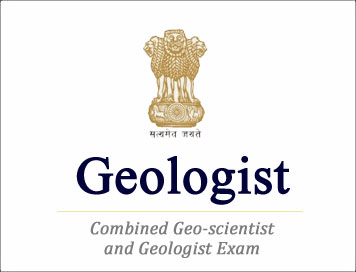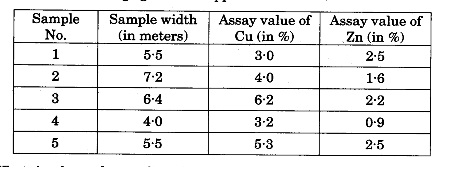NEW! The Gist (APR-24) | E-BOOKS |
(Download) UPSC: Geologist Examination Papers-2020 (Geology Paper - 3)

(Download) UPSC: Geologist Main Examination Papers-2020
(Geology Paper-3)
Exam Name : UPSC Geo-Scientist and Geologist Main Exam
Subject : UPSC Geo-Scientist and Geologist Main Exam Papers 2020 : Geology Paper- 3
Year : 2020
Geology Paper - 3
- Time Allowed : Three Hours
- Maximum Marks : 200
SECTION A
(Compulsory Section)
Q1. Describe the following in brief with diagrams, wherever necessary :
(a) Effect of Great Oxidation Event on certain ore forming processes
(b) Exsolution and replacement intergrowth textures in ore minerals
(c) Mangampeta barite deposit
(d) Byproducts from base metal deposits of India
(e) Core-logging and information deciphered from core-samples
(f) Significant and non-significant geochemical anomalies
(g) Engineering properties of rocks for civil engineering applications
(h) Migration of oil
(i) Environment, Environmental significance of mangroves
(j) Earth's Radiation Budget and factors affecting its heat balance
SECTION B
Attempt any one question.
Q2. (a) Explain how metals are transported by hydrothermal fluids and what are the causes of ore deposition in various types of hydrothermal deposits.
(b) Discuss the genesis of lateritic bauxite deposits, highlighting the important parameters which control their formation. Write a note on the geology of East Coast Bauxite deposits of India.
Q3. (a) A quartz grain has a cubic aqueous biphase inclusion containing a liquid and a spherical vapour bubble. The sides of cubic inclusion are 2 microns and the diameter of vapour bubble is 2 microns. Calculate the degree of fill of the fluid inclusion.
(b) What are the geological settings in which chrysotile deposits are formed ? Explain the process of chrysotile mineralization in these settings.
(c) Explain how the temperature of mineralization can be constrained based on the fractionation of S isotopes in an ore mineral assemblage.
SACTION C
Attempt any one question.
Q4. (a) Explain the process of formation of muscovite and rare metal deposits in granitic pegmatites. Discuss on the geology of important muscovite deposits in the Indian Shield.
(b) Describe the geological characteristics of the following mineral deposits of Aravalli Craton and arrange them in chronological order : Khetri copper belt, Tosham tin and Jhamarkotra phosphorite. :
Q5. (a) Discuss the geological characteristics and genesis of Agucha Zn-Pb deposit.
(b) Write a note on the geology of BIF hosted iron-ore deposits in Western Dharwar Craton.
(c) Describe various methods by which mineral resources can be conserved.
SECTION D
Attempt any one question.
Q6.(a) What are ore guides ? Explain the mineralogical and physiographic guides and discuss their significance in mineral exploration.
(b) Why is soil geochemical survey the most commonly employed technique in mineral exploration ? Describe the method of geochemical survey in residual soils.
Q7. (a) The sample width and assay values for copper and zinc are obtained in a sulphide ore prospect and are given below. Calculate the average sample width and the average grade for copper and zinc.

(b) What is channel sampling ? Explain the steps involved in channel sampling. Add a note on the biases which should be avoided during sampling.
(c) Discuss the application of seismic method of prospecting with a note on its limitations.
SECTION E
Attempt any one question.
Q8. (a) Critically discuss the different geological investigations required in dam sites.
(b) What factors are responsible for coastal erosion ? Explain the method of constructing coastal protection structures.
Q9. (a) Discuss the characteristics of source and reservoir rock for hydrocarbons.
(b) Describe the geology of dolostone hosted uranium deposits in Cuddapah Basin.
(c) Give an account of tectonic controls in the formation of Gondwana coals.
SECTION F
Attempt any one question.
Q10. (a) What are Milankovitch cycles ? Discuss and illustrate diagrammatically as to how global climate variations are correlated with Milankovitch cycles.
(b) Describe geochemical cycle of carbon and discuss how an increase of CO2 in the atmosphere causes ocean acidification.
Q11. (a) Elaborate the various causes and consequences of landslides.
(b) Which are the important glaciers of the Himalayas ?
(c) Discuss the magnitude and significance of any two of these glaciers in the context of the environment. Discuss critically the environmental impacts of urbanization.

